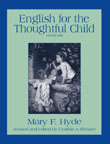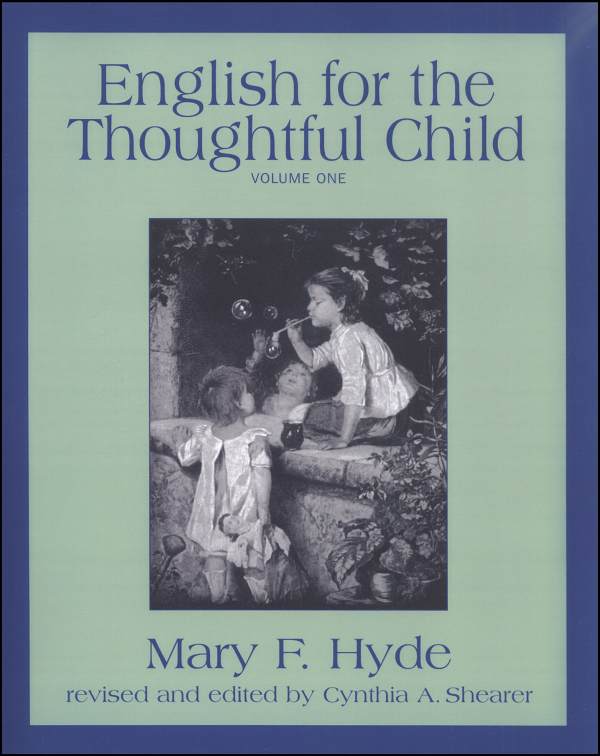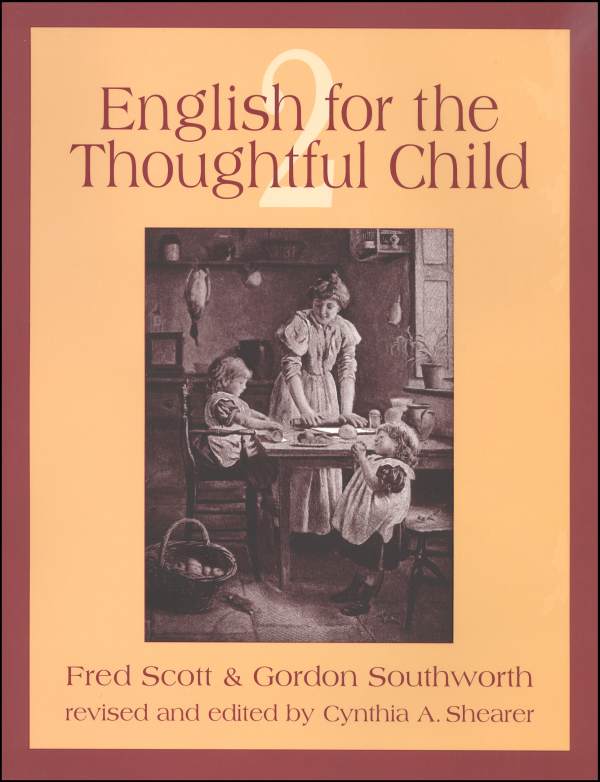Cyndy Shearer's search for language arts materials based upon Charlotte Mason's ideas led her first to a book written in 1903 by Mary Hyde. Cyndy updated and revised the book, making it available to home educators. Greenleaf Press later added a second similar volume, also revised and edited by Cyndy.
Volume One assumes that a child has developed basic writing (or printing) skills and is ready to compose sentences. Thus, it is most appropriate for about second grade level. Volume Two should work for third grade level. However, neither book has an age or grade designation.
Instead of the repetitious workbook pages found in many English language textbooks, there is a mixture of oral composition (or narration), memorization, written composition, and language exercises. Interesting old pictures—likely retained from the original books--are used as prompts for discussion, narration, and writing in some of the lessons.
Charlotte Mason's philosophy is obvious in the methodology I have described. It's also clear as you read through each book and see the emphasis on thinking skills. Charlotte Mason believed that young children should develop powers of observation and analysis. Some lessons tie in with nature, science, geography—enough so that you will probably need to use the recommended reference book or websites from time to time for your child to be able to answer the questions, especially with the second volume. There is plenty of room and encouragement to adapt either volume to suit your own needs. For example, you might find that you end up sidetracking into some of the nature lessons further than originally intended, but that's the beauty of this type of learning.
Volume One covers basic grammar skills necessary for beginning writing—complete sentences, types of sentences, capitalization, and punctuation. Children are actually writing compositions by the end of the book. Literary excerpts used throughout the book are from fables, mythology, and poetry.
Volume Two reviews sentences and moves on to paragraph writing. It also teaches nouns and their usage—common, proper, plural, and possessive; contractions; use of quotation marks; synonyms; homonyms; and letter writing. This does not reflect the typical list of state standards that would at least include more coverage on different parts of speech. The goal of this book is much more on developing a child's familiarity and facility with language, both written and spoken, than with his or her knowledge of language category terms such as “adverb” and “conjunction.” Although there are some fill-in-the-blanks type exercises, children are also learning to write conversational dialogue and the proper use of words in different situations. In some ways (e.g., thinking, memorizing, writing) it is more challenging, and in other ways (coverage of parts of speech) less challenging than other resources for this level.
English for the Thoughtful Child will work best for those who truly want to implement Charlotte Mason's ideas and are not worried about what everyone else might be covering at the same time. It is a different, yet very effective approach to language arts.
Classical educators might be divided over this book. While it requires memorization and recitation, it is much more open-ended than some classicists prefer. However, those who value development of thinking skills at early levels might see it as a perfect classical education component.
There are no answer keys—answers should be obvious to parents. Brief teacher information is at the front of each book.
English for the Thoughtful Child is a low-pressure, yet effective introduction to language arts. A good follow-up to these books is Simply Grammar by Karen Andreola.










